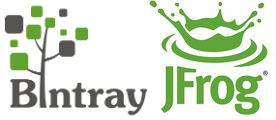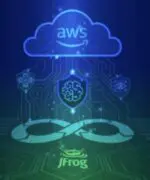
Enterprise software development generates a lot of bundles of files, from deployable artifacts to binary blobs. Keeping all of those artifacts straight has long been the task at which JFrog’s Artifactory excels. Now, containers are making it into the mix in a big way.
Artifactory has supported Docker containers since September. This binary repository-management solution now offers a new method of access, however. For enterprises that wish to offer their applications in a containerized form to organizations outside of their corporate structure, Bintray can now host those artifacts.
As of the beginning of March, enterprises that already use Artifactory to manage their internal binaries can open a Docker Hub of their own, internally. Fred Simon, cofounder and chief architect of JFrog, said, “Bintray is needed when you need to cross boundaries. Sometimes it’s used inside the same organization when they want to make [containers] available worldwide.”
Simon said of the comparison to Docker Hub, “It’s a different model in terms of pricing, and it’s a different architecture. But at the end of the day,” he agreed that the capabilities offered by Bintray are similar to those offered by Docker Hub: Worldwide, automated application artifact distribution.
All those artifacts inside Artifactory became a little easier to sort out earlier this year when the repository added AQL, the Artifactory Query Language. This was a feature demanded by customers, said Simon.
AQL, he said, gives more clarity to what’s going on in Artifactory through the ability to ask complex questions of the metadata the database contains. “With Artifactory, what we found is, as a result of Docker and Docker containers, they contain applications themselves, Web applications, and other pieces. It’s always LEGO building: creating bigger LEGOs out of smaller LEGOs and so on. In this environment, the information inside Artifactory becomes very interesting, and leveraging this information is demanded by a lot of our customers.
“[The] first use case is to say, ‘I am automating my QA deployment: What is the latest version of the services and the recommendations for this environment?’ We’ve tried to support those kinds of complicated queries in the past, but we discovered our customers had different ways of determining the latest version of what a QA deployment is. We gave this capability for querying with whatever properties or parameters they like.”
Simon added that, with AQL, users can determine which artifacts are no longer being used and which have not been updated in a certain timeframe.
For the future, Simon said that version 2 of the Docker API is interesting to his customers, but that CoreOS’ Rocket has yet to make an appearance in their demands. He hinted that JFrog would support the alternative container runtime, were it in demand.






